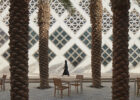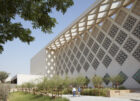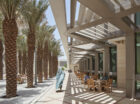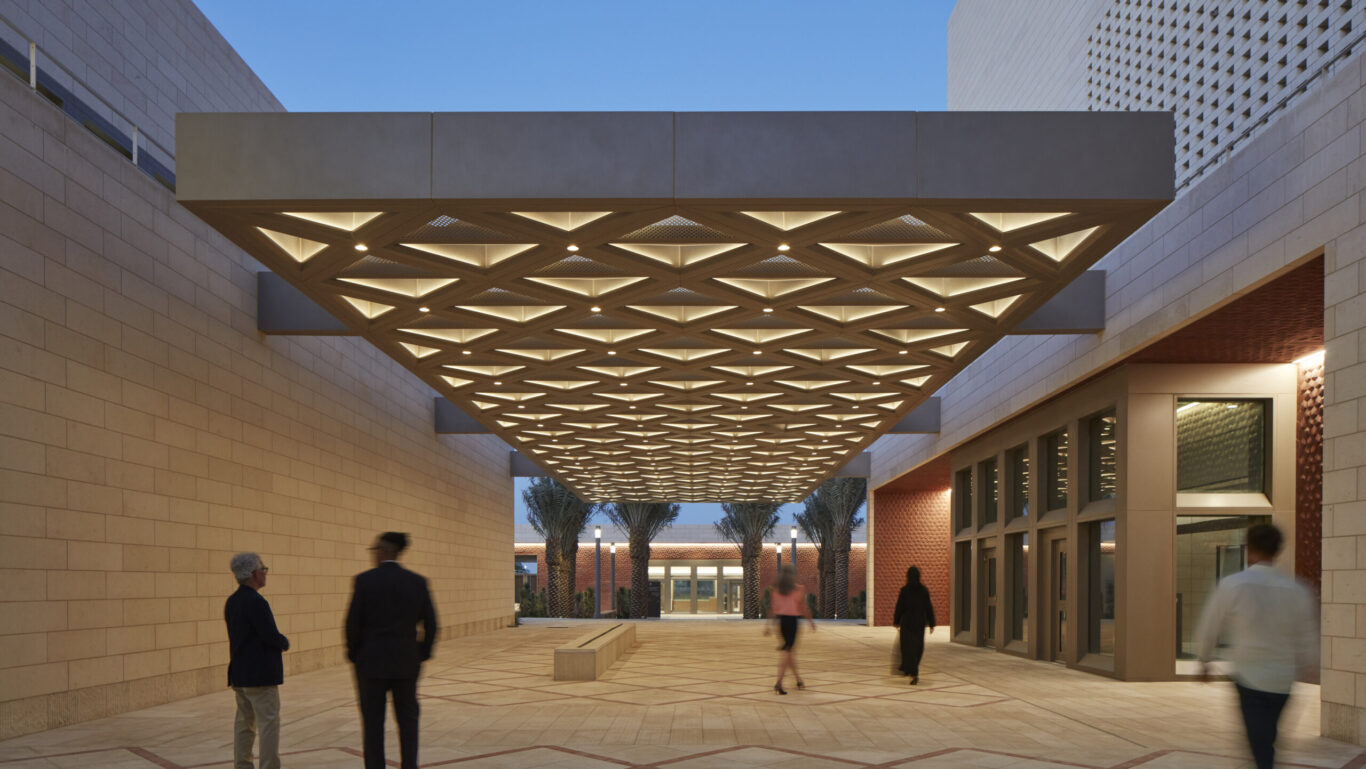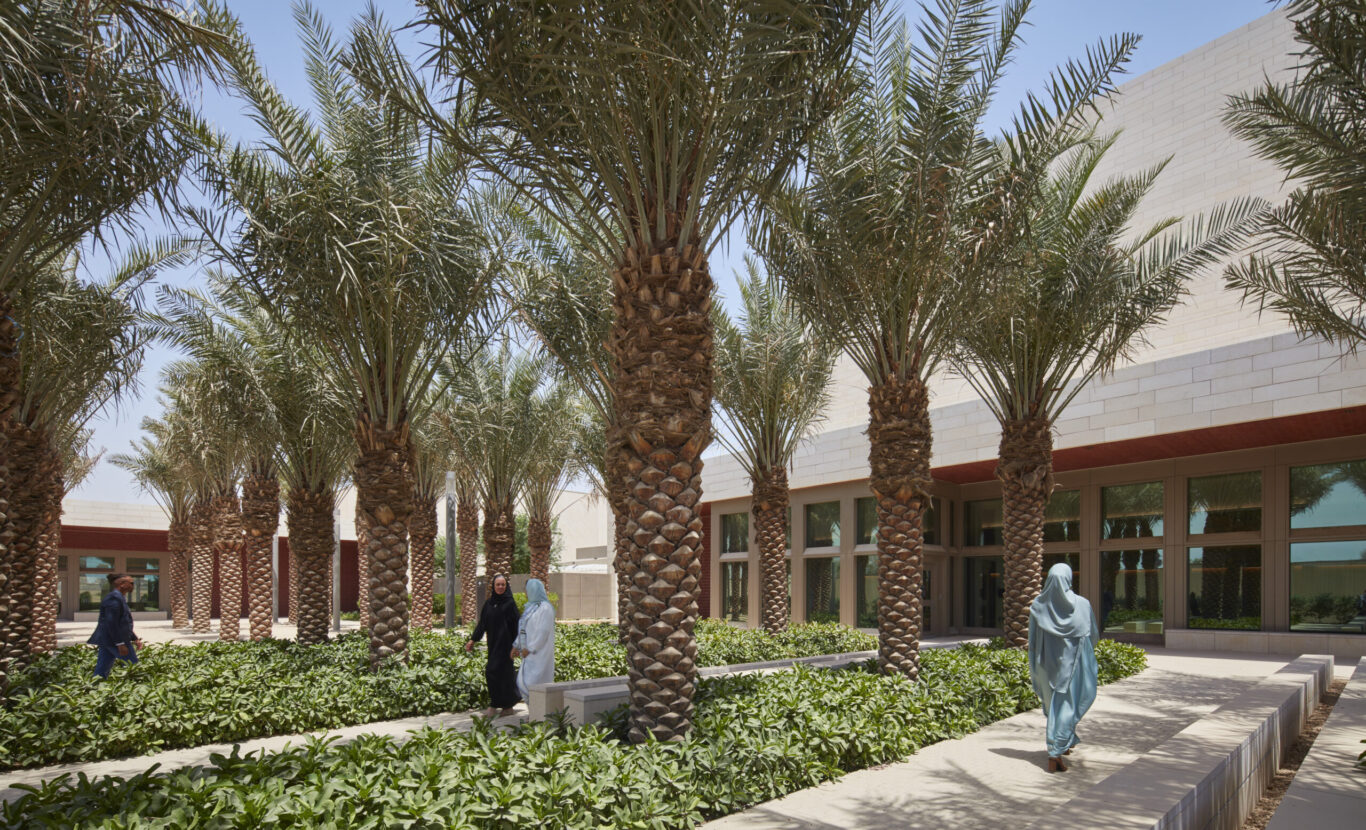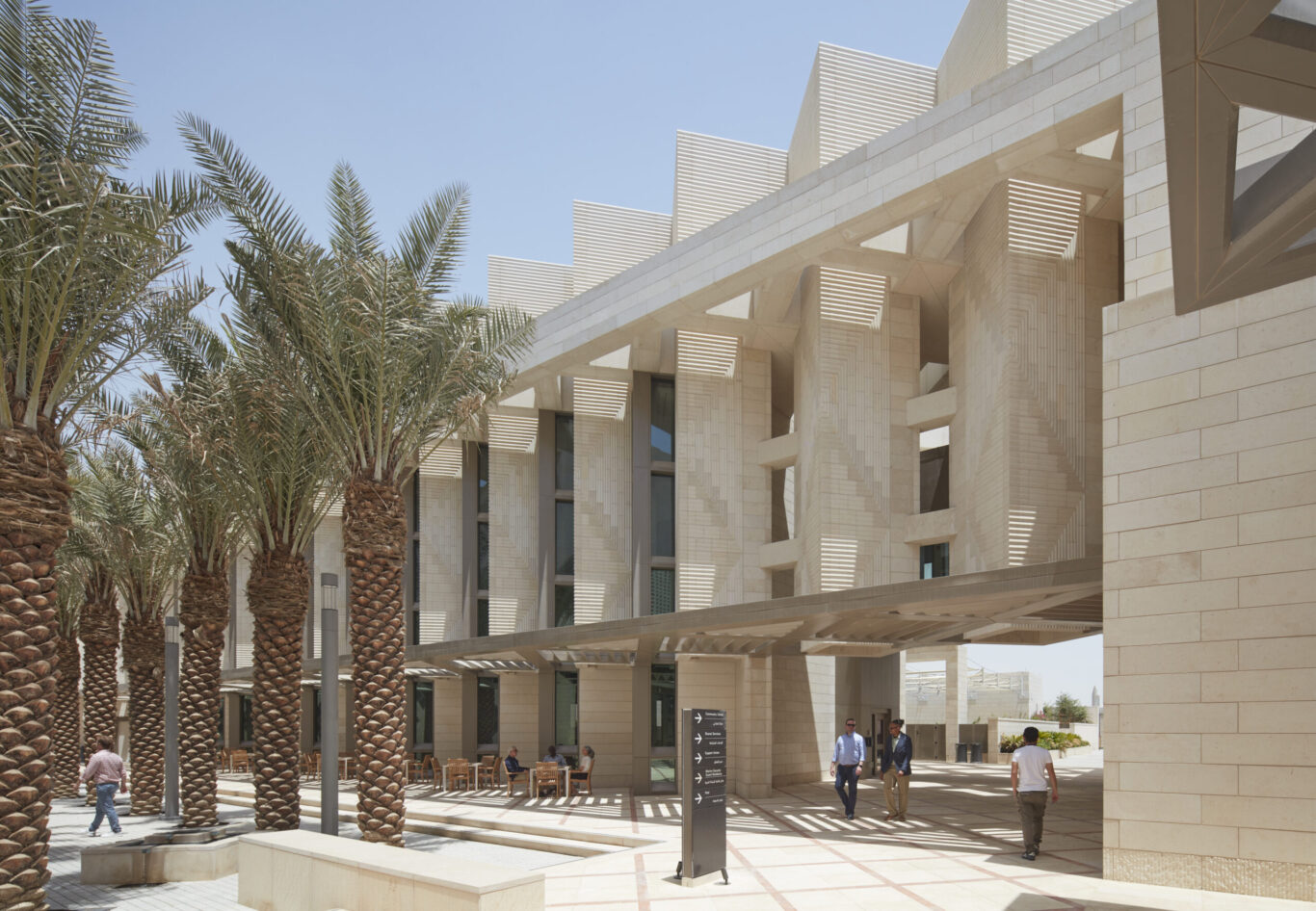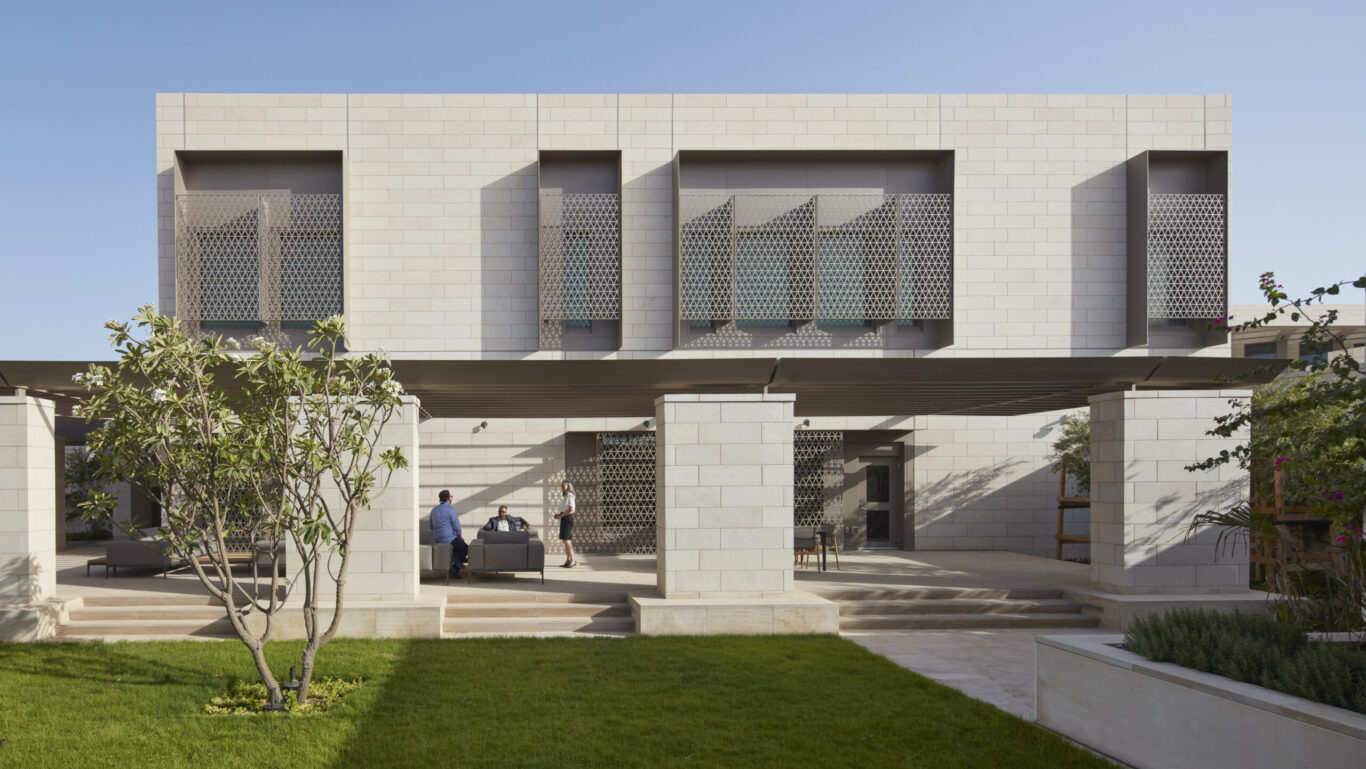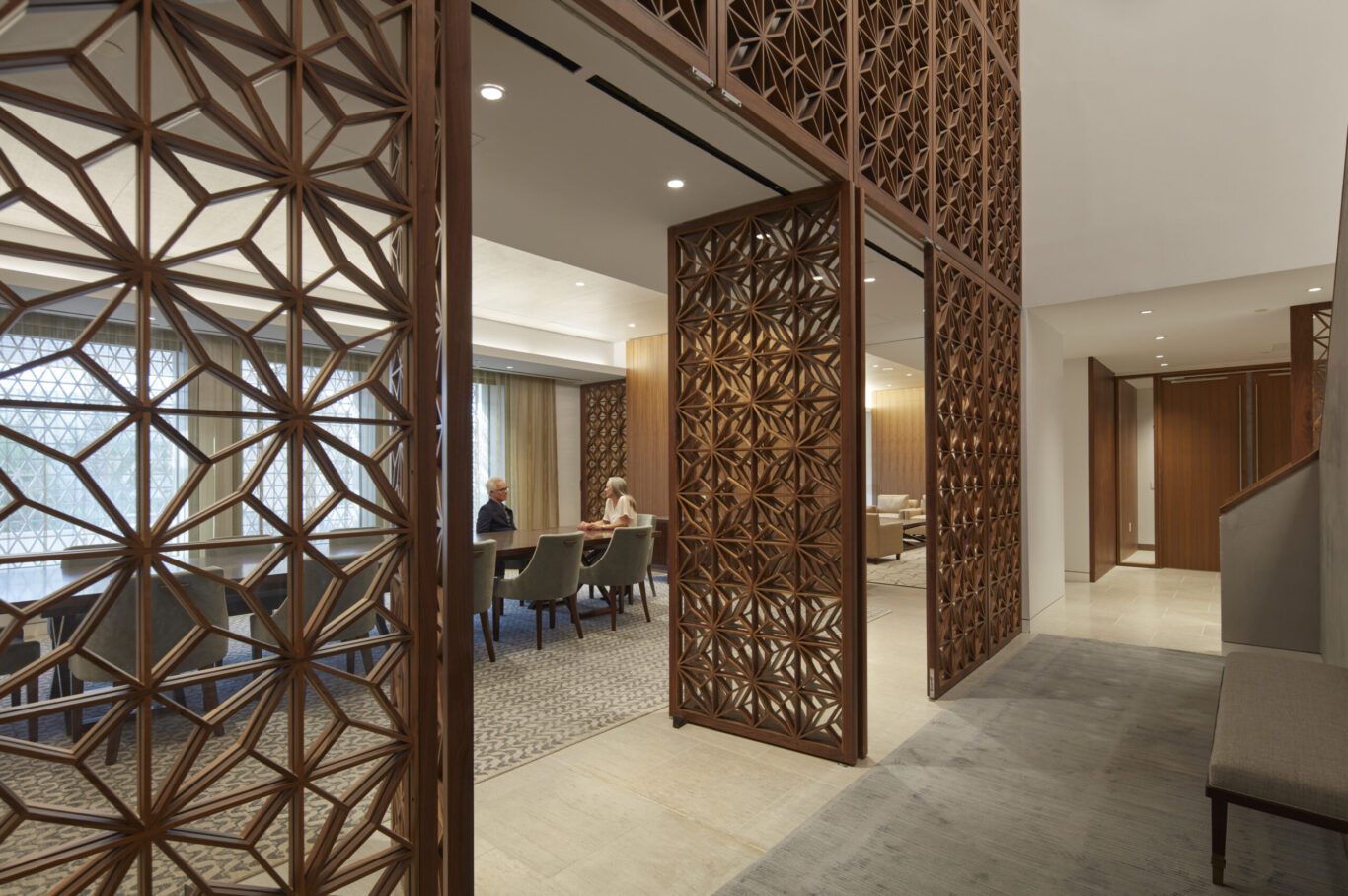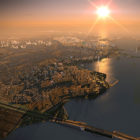Planning a contemporary consulate, informed by local traditions
Located in a central district of Dhahran on Saudi Arabia’s east coast, the new consulate contributes to its urban setting by interpreting regional building methods in a contemporary way. The organization of elements on the flat, rectangular site takes cues from traditional Saudi Arabian settlements, which feature tight clusters of structures along narrow streets. This arrangement protects the outdoor spaces from sun, wind, and, occasionally, sandstorms. The buildings comprising the new consulate are tightly clustered and define a series of outdoor spaces: a garden, the central event space, and recreational facilities for the consular community.

The chancery, the consulate’s southernmost building, is also its tallest. Just north of the chancery is the community center, which contains recreational and meeting facilities for consulate employees and their families. North of the community center is a residential zone of low-rise buildings that complete the sequence of parallel structures. Putting the tallest building at the site’s southern edge maximizes shade in a region where temperatures often rise above 100 degrees Fahrenheit.


